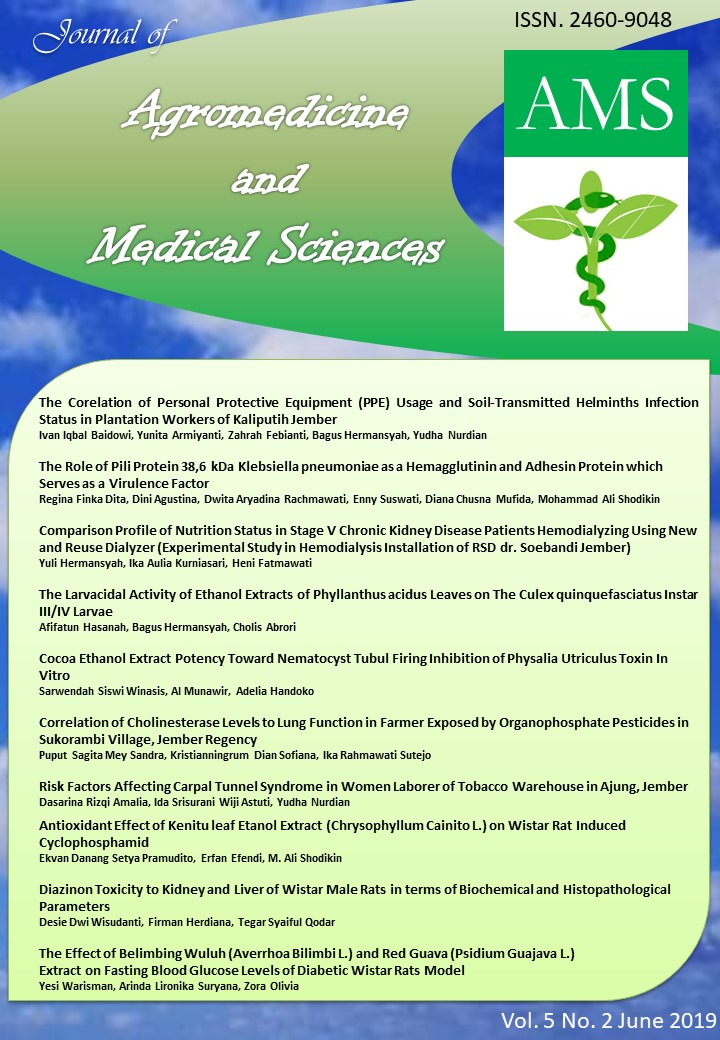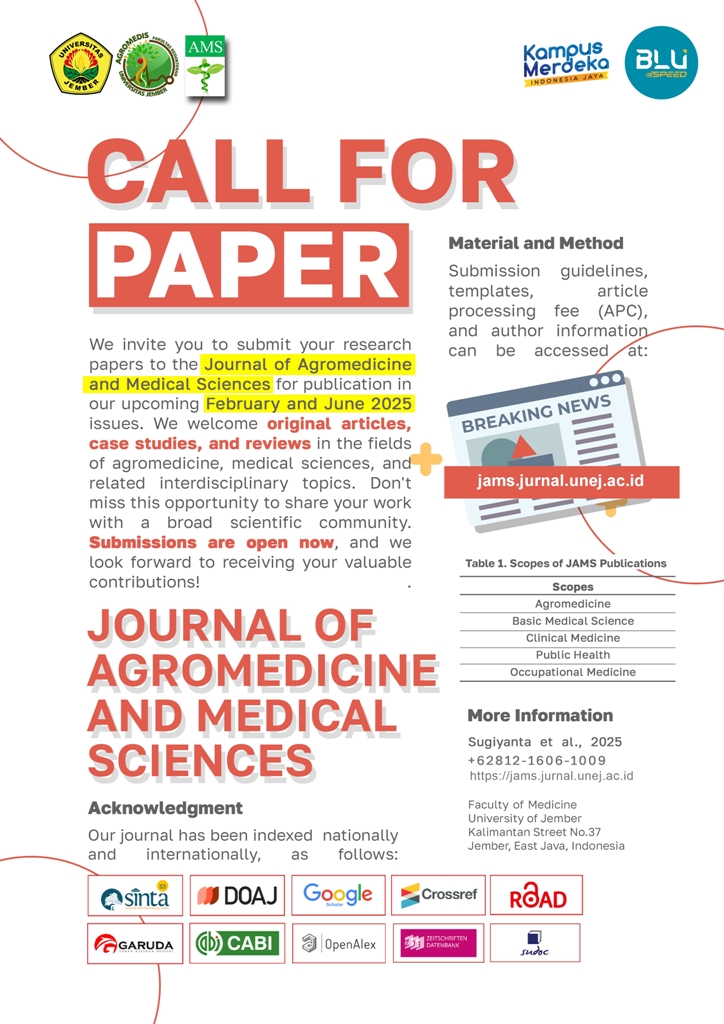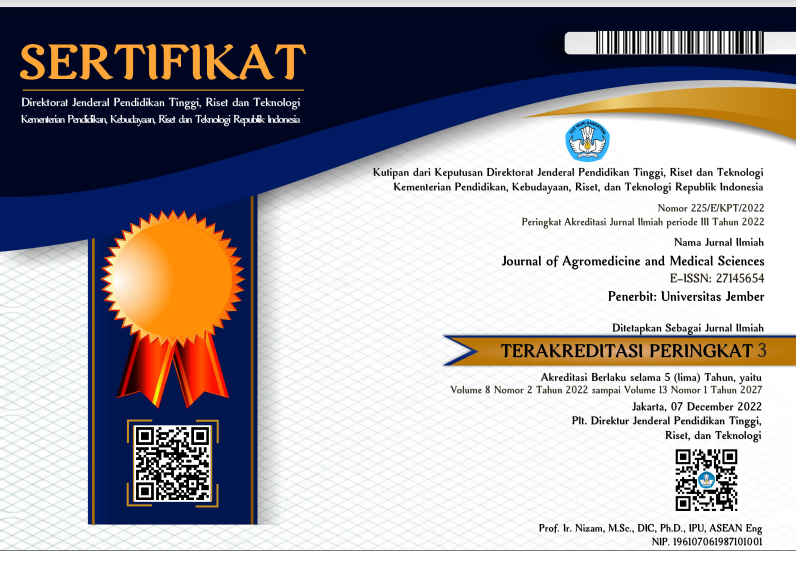The Role of Pili Protein 38,6 kDa Klebsiella pneumoniae as a Hemagglutinin and Adhesin Protein which Serves as a Virulence Factor
DOI:
https://doi.org/10.19184/ams.v5i2.9558Abstract
Klebsiella pneumoniae is an infectious bacteria in various parts of the body. The presence of proteins in pili that will bind to cell surface receptors (adhesin proteins) and cell membrane sugar molecules (hemagglutinin proteins) is a very influential factor in the ability of K. pneumoniae to enter the human body. The purpose of this study was to determine the role of pili 38.6 kDa K. pneumoniae protein as a hemagglutinin and adhesin protein which functions as a virulence factor. This type of research is pure experimental research using the electrophoresis method (SDS-PAGE) to obtain protein. The protein obtained was then tested for hemagglutination and adhesion test using erythrocyte cells and enterocytes of BALB / C mice to determine their role as hemagglutinin and adhesin proteins. Conclusion of this study pili protein 38.6 kDa Klebsiella pneumoniae acts as a hemagglutinin and adhesion protein which functions as a virulence factor.
Keywords: Klebsiella pneumonia, 38,6 kDa Protein, Hemagglutinin, Adhesin























